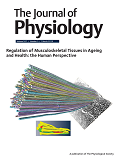
Authors: Marcelle Paula-Ribeiro, Indyanara C. Ribeiro, Liliane C. Aranda, Talita M. Silva, Camila M. Costa, Roberta P. Ramos, Jaquelina S. Ota-Arakaki, Sergio L. Cravo, Luiz E. Nery, Michael K. Stickland, Bruno M. Silva.
Abstract
Dysfunction of post-exercise cardiac autonomic control predicts mortality, but its underlying mechanisms remain unclear. We tested whether carotid chemoreflex activity restrains post-exercise cardiac autonomic control in healthy adults (HA), and whether such restraint is greater in patients with pulmonary arterial hypertension (PAH) who may have both altered carotid chemoreflex and altered post-exercise cardiac autonomic control. Twenty non-hypoxaemic patients with PAH and 13 age- and sex-matched HA pedalled until 90% of peak work rate observed in a symptom-limited ramp-incremental exercise test. Recovery consisted of unloaded pedalling for 5 min followed by seated rest for 6 min. During recovery, subjects randomly inhaled either 100% O2 (hyperoxia) to inhibit the carotid chemoreceptor activity, or 21% O2 (normoxia) as control. Post-exercise cardiac autonomic control was examined via heart rate (HR) recovery (HRR; HR change after 30, 60, 120 and 300 s of recovery, using linear and non-linear regressions of HR decay) and HR variability (HRV; time and spectral domain analyses). As expected, the PAH group had higher carotid chemosensitivity and worse post-exercise HRR and HRV than HA. Hyperoxia increased HRR at 30, 60 and 120 s and absolute spectral power HRV in both groups. Additionally, hyperoxia resulted in an accelerated linear HR decay and increased time domain HRV during active recovery only in the PAH group. In conclusion, the carotid chemoreceptors restrained recovery of cardiac autonomic control from exercise in HA and in patients with PAH, with the restraint greater for some autonomic indexes in patients with PAH.
DOI: https://doi.org/10.1113/JP277190